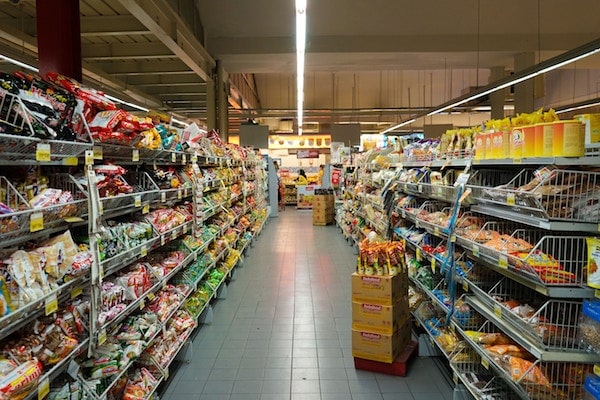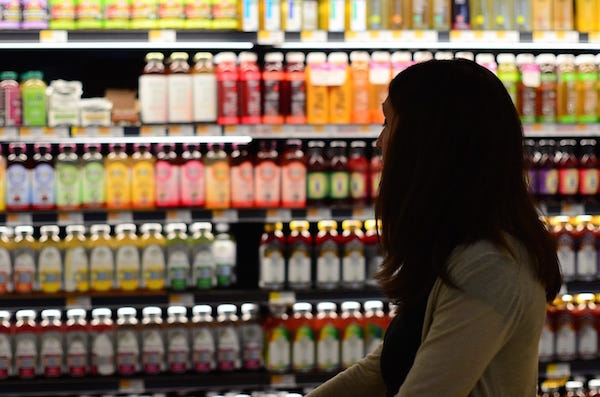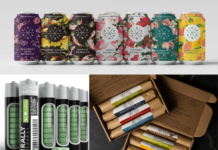
Today’s food consumer has constantly evolving tastes and preferences, which can make it difficult to meet people where they are at and provide them with a product that solves their problems. There are many aspects of the changing consumer to consider. The growing impact of online marketplaces (like Amazon), direct-to-consumer sales (through brand owned websites), third party delivery services and in-store pickup/delivery at traditional retailers has made where these consumers expect to find, consume and purchase food is a growing conundrum for food brands.
Generally, growing food brands have needed to go into distribution at physical traditional grocery stores to be available nationally. To be financially viable, these food brands have to raise usually a combination of equity and debt to finance the marketing activities necessary to get trial in today’s crowded marketplace and float long payment periods with large grocery stores and distributors that are generally slow to pay food brands. However, sometimes food brands can stay local if they open their own retail location and their local market is big enough. The question of which path to take has to with the intersection of the entrepreneur’s goals and the answer to the question “where does my target customer expect to find me?”
Food brands should also “go deep” in the areas they have distribution to achieve enough sales velocity rather than spreading themselves thin. If their core consumer segment lives in a certain state or region, it is best from a cash flow and sales velocity perspective to launch first in that place until the business establishes a significant footprint and generates sell-through. Then, the food brand can target a new geographic area or partner with a new retailer/distributor from a position of business strength.
On our podcast this week, Trueman McGee, Owner and head “Roll Master” of Funky Fresh Spring Rolls talks about how his business’ first points of distribution was selling at farmers markets, sporting events, festivals and through catering, all relatively low-risk ways to reach consumers and conduct valuable market research through customer feedback. Since using these channels to build a customer base and a brand, he recently opened up a temporary retail location with plans to launch a few more retail locations and a “Funky Fresh Fun Factory” to mass-produce rolls before going into distribution in grocery stores. Trueman had wanted to go right into retail distribution but chose to start with building his business where he could easily reach customers, hone his product and build his brand.
There are wide variety of tools and marketplaces to reach customers for today’s food brands. And, sometimes the ideal distribution path looks different than the entrepreneur intended when they started the business. The brands that survive today’s marketplace will be making decisions about distribution and channels of delivery with their customers’ expectations and preferences center stage.
And now, our roundup of the best food and beverage finance news, events and resources from around the web…
 Business Model Insights
Business Model Insights
- How do I build a strong board that supports my brand and company vision? (New Hope Media) – “Very few entrepreneurs go it alone and manage to build a successful brand. Typically, it takes a village of trusted advisors, directors, investors and other allies to help a new company find its path and fulfill its mission. That’s why assembling either an advisory board or a board of directors—or both—is so critical. But it’s also important to fill those seats with the right people—those who share your values and can offer skills, knowledge and ideas that may not have.”
- New Belgium Brewing Company: Kim Jordan (How I Built This)
- 5 Key Questions to Ask Yourself if You Plan to Start a Business (SBA Blog)
 Raising Capital
Raising Capital
- Are your financial statements investor and acquirer-ready? (New Hope Network) – “Net revenue and gross margin are two of the most important metrics for branded consumer packaged goods companies in the eyes of strategic acquirers and financial investors. Net revenue, typically gross sales less all sales discounts, serves as the primary metric for measuring the size and growth trends of a brand. When a company in the natural products space sells to an acquirer, enterprise value as a multiple of net revenue is the most-cited statistic when comparing transaction valuations. Gross margin is important as a measure of profitability and consumer acceptance. A company with a 40 percent, or more, gross margin will grow capital more efficiently and have more available funds for sales, marketing and capital investment than one with a 20 percent gross margin. Higher gross margins are also viewed as an indicator of customer acceptance and product differentiation, as the CPG company can charge a greater premium for its product than one with lower margins, creating the buyer’s ultimate path to significant profitability.”
- Maintaining Working Capital for Your Farm Operation (Compeer Financial)
- 5 reasons great investors, brands focus on gross margin (New Hope Network)
 CPG/National Brands
CPG/National Brands
- Telling your story to buyers: the 4C’s (Chobani Incubator) – “In today’s food and beverage CPG universe, an unprecedented number of brands are clamoring at retailers for distribution. Distribution is essential to many brands’ growth, and the keys to expanding your distribution lie in the hands of retailers. Yes, there are alternative ways to expand your distribution through direct-to-consumer offerings on your website, Amazon, or a suite of other online channels. And we know it’s important to reach your customers wherever they are. However, you’ll most likely want to add doors and seek retail distribution to continue growing your brand. Whether you’re pitching to an independent speciality grocer, a fitness chain, or your category merchandizer at Walmart, you need to have your sales pitch and strategy polished to win distribution. When you’re building your startup, you become focused so intently on the operations of your own company and the customer. However, when meeting with buyers, it’s essential to incorporate the other two C’s, Category and Competition, into your sales pitch. In a world with tens of thousands of brands pitching for shelf space, you need to stand out.”
- Investing in the Future of Food: How to leverage farmers markets, foodservice to build a brand (Food Navigator)
- The No. 1 sales and distribution mistake young brands make (New Hope Network
Market Trends
- The SPINS spin on Natural Products Expo East 2018 trends (New Hope Network) – “As plant-based foods strengthen their position in the market, distribution channels have opened to meet consumer needs in all facets of retail. (This was the subject of last month’s Good Food Insights article.) In fact, SPINS’ data on plant-based categories (analogs to meat and dairy) show that 96 percent of sales volume for these items now comes from conventional retail. Yet one trend observed at Expo East shows the edge of innovation continues to develop in the natural side of the industry, even as plant-based establishes itself in conventional markets.”
- Mapping consumer trends: How radical personalization is prompting change at retailers (Food Navigator)
- From Alcohol-Free Gin To Sparkling Cannabis Water, Alcohol Brands Are Pushing Into Non-Alcoholic Beverages (CB Insights)
Farming and AgTech
- Blood, Guts and Truth from Red Tomato (The Red Tomato) – “As retailers cut and consolidate to bring remaining profits in, they are pushing business externalities up the supply chain – rock bottom prices, inflexible start and end dates, zero tolerance for regional weather or production trends, 100% fulfillment rates, proprietary food safety certifications, lengthy payment terms and sky-high insurance thresholds. It’s true that consumer demand for local, ethical, sustainably grown products has grown year over year. And yet the wholesale buyer’s focus on short-term survival makes it nearly impossible for small and mid-size suppliers to bring to market the very products their shoppers seek.”
- This is the Number One Reason Farms Fail (Kitchen Table Consultants)
- First outcomes-based regenerative agriculture seal approaches market readiness (New Hope Media)
 Deals/M&A
Deals/M&A
- M&A helps food and grocery companies do everything better (FoodDive) – “Large organizations have gotten into M&A as a way to bring in new capabilities in ingredient innovation, expand their product portfolios, access new customers and increase their geographic reach. However, this is not entirely by choice. Within the industry, M&A has evolved into a responsive tool for companies to use as they shift through the ever-changing market demands. M&A is now seen as a way to enter new markets, broaden the appeal of products, jump on trends that drive growth and generally stay abreast of what consumers are asking to eat.”
- Fast Food Consolidation (CB Insights)
- Selling a Legacy: Food Companies Seek to Boot Their Dated Brands (Bloomberg)
 Industry Events
Industry Events
- Must-have resources for scaling your omnichannel strategy (New Hope Network) – $, 10/24 Online (archive available)
- What’s behind the Omnichannel marketing shift? (Nutrition Capital Network) – Free, 10/30 Online
- Edible Startup Summit (Wisconsin Department of Agriculture) – $, 10/26 in Madison, WI
- INNOVATING SOIL 3.0 FoodShots Award (FoodShots) – Free, 12/1 Online
- FoodShots Groundbreaker Prize – Free, 12/1 Online
- FaBsafe Certificate: Basic Food Safety Training (FaB Wisconsin) – $, 11/14, location TBD
- Winter Nosh Live (Project Nosh) – $, 11/29 – 11/30 in Santa Monica, CA
- MOSES Organic Farming Conference 2019 (MOSES) – $, 2/21 – 2/23 in La Crosse, WI
- Expo West 2019 (New Hope Network) – $, 3/5 – 3/9 in Anaheim, CA
- Nosh Live Summer 2019 (Project Nosh) – $, 6/10 – 6/11 in New York, NY





